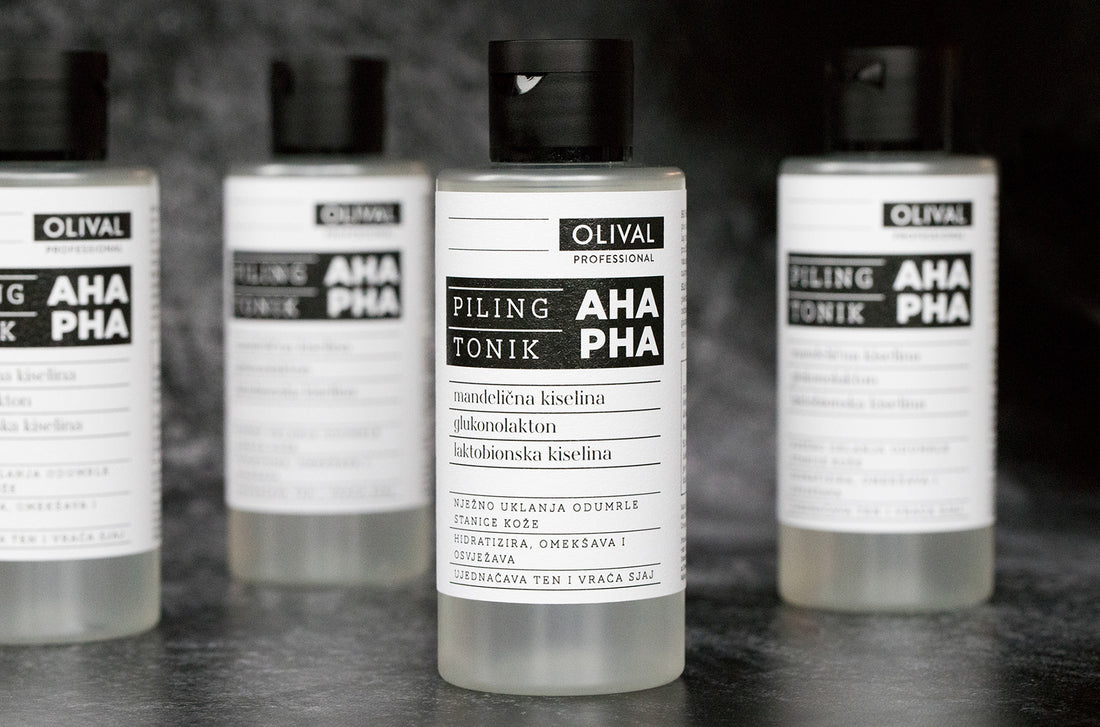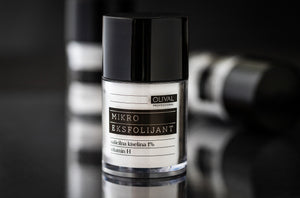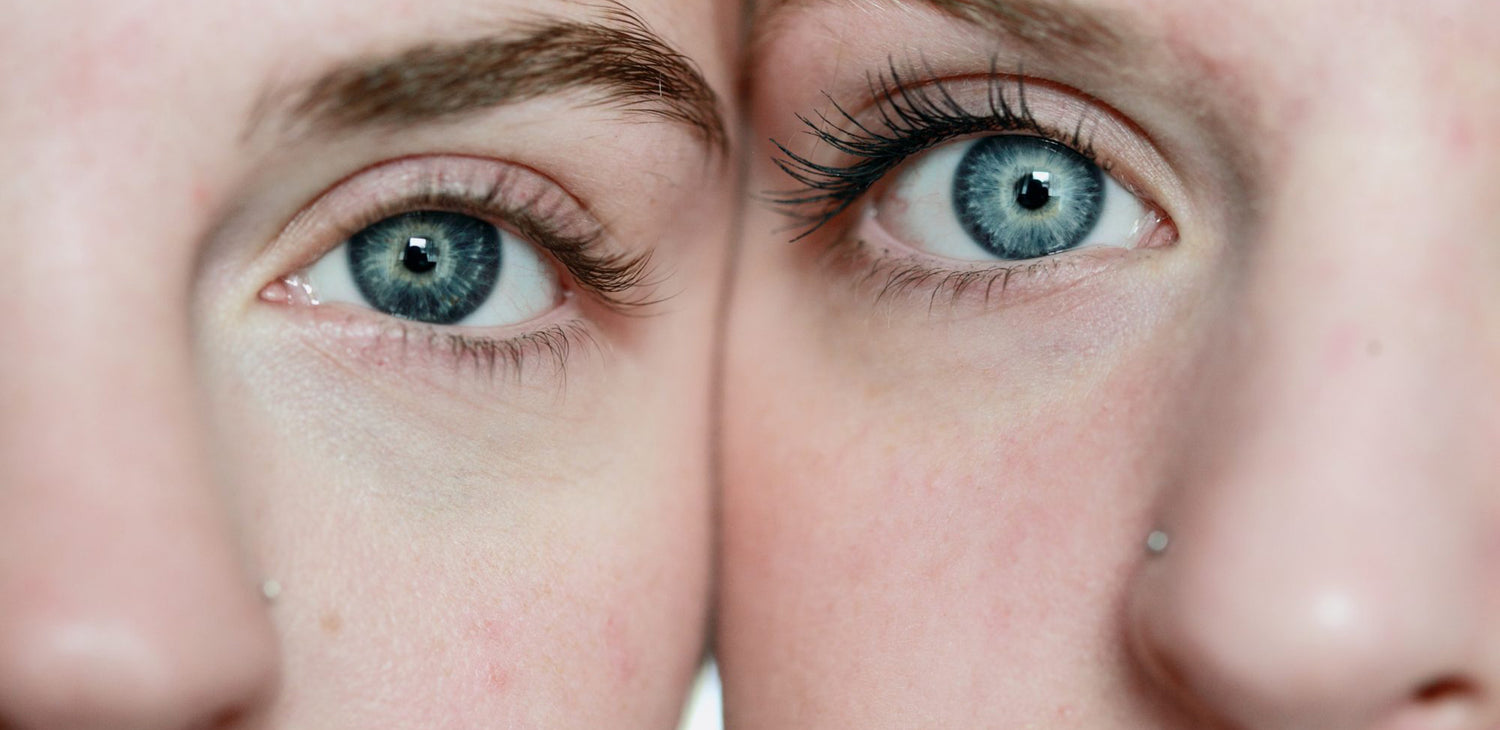What kind of exfoliation can it be? It can be occasional and strong, caused by high percentages of potent acids, with a greater risk of irritation and damaged skin barrier. It can be more frequent and gentler, (more) light, moisturizing and more suitable for various skin conditions. We are also guided by the last approach. We first introduced you to the Microexfoliant - peeling powder with 1% salicylic acid and castor wax grains, and now you will get to know our new liquid exfoliant - Peeling Toner - the stars of which are AHA and PHA acids.
Key ingredients in a key pH of 3.6
Mandelic acid, gluconolactone, lactobionic acid, apple extract, hyaluronic acid, betaine, glycerin and panthenol are the basis of the rich and at the same time extremely gentle formulation of Peeling Toner. The combination of AHA and PHA acids (5.9%) and a specially adapted pH value of 3.6 guarantees effective chemical peeling of almost all skin types , even mature skin or beginners with this type of acid. Peeling Toner gently removes dead skin cells and restores moisture, while long-term use makes the complexion smoother, more refined, more uniform and brighter.

A cocktail of gentle acids and nourishing ingredients
You've probably already heard a lot about chemical peels, but certain acids aren't talked about that often - and they should be! Mandelic acid is first on our list. Alpha-hydroxyl (AHA) acid is derived from almonds, and it differs from other acids in the AHA group in that it has the gentlest effect on the skin (unlike, say, glycolic acid). It very gently removes dead skin cells, accelerates cell turnover, which works against blemishes and improves the overall appearance of the complexion, purifies pores and restores natural radiance .
The time of lactobionic acid is also yet to come, precisely in the Peeling Toner. This acid is increasingly popular for use in cosmetic products, and it has gained popularity with medical skin peeling treatments. It is a polyhydroxy acid (PHA) similar to the AHA group of acids. What differentiates them is the size of the molecules - PHA acids have a larger molecular structure, they do not penetrate deep into the skin and thus perform a very gentle exfoliation without a strong irritating potential. Lactobionic acid acts similarly to acids from the AHA group, but with additional benefits. It has soothing, anti-inflammatory properties, and helps reduce the appearance of wrinkles and fine lines.
Exfoliation, antioxidant effect, hydration...
Compared to AHA and BHA acids, PHA acids also differ in their hydroxyl groups, which enable them to remove dead skin cells and hydrate at the same time. This is why the PHA acid category is excellent for all skins that have a hard time "tolerating" AHA and BHA acids, i.e. for mature and more sensitive skin. PHA acids include gluconolactone with a very similar (and synergistic effect) which also gently exfoliates the skin, hydrates and provides an antioxidant effect against free radicals caused by the sun and environmental stressors . It works extremely well on the unevenness of the complexion, restores the necessary moisture and helps reduce the visibility of enlarged pores.
The moisturizing effect is also supported by wild apple extract, whose presence has been known since time immemorial, and its use is well known for numerous conditions of the human organism. Due to its natural properties and richness in organic acids such as malic and gallic acid, as well as magnesium and iron, apple fruit extract wonderfully nourishes, hydrates and tones the skin . In addition to the valuable extract, there is also hyaluronic acid, betaine, glycerin and panthenol - moisturizers extremely desirable in skin care. Hyaluronic acid, betaine, glycerin and panthenol are also humectants, i.e. moisturizers that return much-needed moisture to the skin and regulate hydration levels in its layers . They are extremely desirable in the care of skin in a state of dehydration, regardless of the type itself, since they instantly moisturize the skin, soften and nourish it.

Peeling Toner is best applied directly to the palms
When you want to introduce this toner into your routine, do it according to the needs of your own skin. Depending on the condition of the skin and needs, the toner can be used several times a week to every other day (mature, dry, balanced skin) or daily (exclusively resistant, oily skin) . Due to the specific action of acids that accelerate cell turnover, in problematic skin prone to acne and pimples, a "cleansing" phase is possible, which is short-lived and transitory, and is characterized by irregularities that appear in the usual places on the skin where they normally appear (for example, localized on beard).
Peeling Toner with AHA and PHA acids is applied in the evening to a clean and dry face, with a piece of cotton wool, a cloth or by dabbing directly on the palms after shaking it (which is the ideal way of use due to saving the product and the gentlest application without pulling on the skin) . It is necessary to avoid sensitive areas around the eyes and, if necessary, around the lips. After absorption, the treatment continues with a moisturizing serum, cream and/or oil.
It is applied exclusively on dry skin, with mandatory application of sun protection products during the day. Peeling Toner is not recommended for extremely sensitive or damaged skin, and parallel use with retinoids or other AHA and BHA acids (layered application and combination in the same routine) is also not recommended. AHA and PHA acids may be used during pregnancy and breastfeeding, unless there are obstacles of an individual nature.



